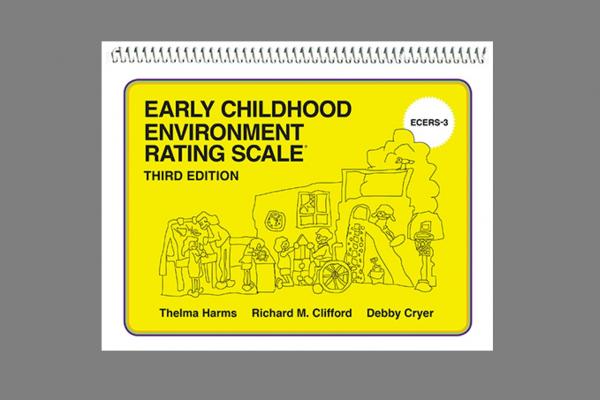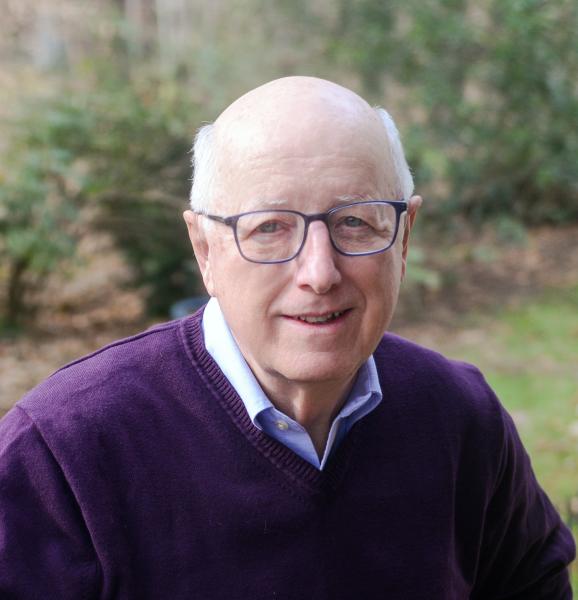
Influential Environment Rating Scale for early childhood care turns 40
What do young children truly need to succeed?
This is the question that veteran UNC Frank Porter Graham Child Development Institute (FPG) investigators Thelma Harms, PhD, Richard M. Clifford, PhD, and Debby Cryer, PhD, have spent five decades asking and answering.
And though the three have had many things in common over their long collaboration, one thing is principal among them and clear in their work on high-quality environments for young children: They have always deeply and carefully paid attention to the children in their midst.
“Thelma, Dick and I, all of us, are passionate about getting the right things done for kids,” says Cryer.
Their time-tested research and extensive observations led to the first assessment tool in their publication of the “Early Childhood Environment Rating Scale (ECERS).” Now in its third edition and used all over the world to set a standard for high-quality care, the ECERS is celebrating 40 years in print. Following the ECERS were the publications of the “Infant/Toddler Environment Rating Scale (ITERS),” “Family Child Care Environment Rating Scale” (FCCERS), and the “School Age Environment Rating Scale,” (SACERS). With FPG colleague Noreen Yazejian, PhD, the group has recently published third editions of the Infant/Toddler Environment Rating Scale and Family Child Care Environment Rating Scale.

All the scales are highly popular measures of the environmental provisions and teacher-child interactions that affect the broad developmental needs of young children. Major research projects―as well as almost all state efforts to evaluate and improve early childhood classroom quality―use the ERS tools. In 2014, Kaplan Early Learning Company and the Leon & Renee Kaplan Foundation for the Health and Well-being of Children presented the 2014 Innovator Award to Harms, Cryer, and Clifford for “forever changing the view of quality care in childhood education” with ERS.
“The early childhood profession provides an opportunity to really get to know children and also what children need―how they can be stimulated, kept healthy, kept inquiring,” says Harms. “It's a wonderful field to be in. Young children can help us focus on the environment in a very different way.”
“No matter what the new trends are in child development, such as the current early push toward reading or to recite the alphabet before a child can understand it,” says Cryer, “the principles of child development have never changed, and they drive the scale content.”
The scales have been revised as appropriate through the years, but the ERS measures used to evaluate programs are based on evidence that children―no matter where they come from―should receive three main things from a high-quality early care environment:
- Protection of their health and safety
- Development of positive relationships
- Opportunities for appropriate stimulation and learning from experience
“We look at early learning settings from the point of view of the child,” Clifford said in a 2019 interview. “This was a policy framework that encouraged thinking of the child as a whole and developing relationships. It focuses on making sure children are healthy and safe, that they have positive relationships, and there are opportunities to experience life and learn from it.”
In the 1970s, Harms and Clifford were both working at FPG in the field of early child care and education environments, but there was no consistent way to measure quality. Harms had created checklists during child care center visits when she was searching for her own son's care, and together she and Clifford surmised that quality could not be measured with one idea in mind, but with a series of levels of quality.

“I did a number of checklists so the teachers would be able to observe how children chose materials, what they did with those materials, how children interacted with one another, how teachers interacted with children and with parents,” says Harms. “My experience as an early childhood teacher was very helpful, but it was also very important for me to develop observational skills so I could write material that would help teachers improve their practice.”
When Cryer came to FPG in August of 1975, arriving on the same day that Thelma Harms arrived from Berkeley, California, she and Harms began working together closely, evaluating early care and education settings, spending “millions of hours” in early childhood programs, says Cryer, and sometimes even with Cryer's baby daughter Emma, too. As both had early childhood program experience and a shared vision, Cryer and Harms were astute observers. The things they noted about the classrooms resembled Emma's needs, too―she needed to be talked to, she needed to explore and play and create, and she needed to be safe.
“Thelma and I traveled all over the United States with the primary goal of helping practitioners figure out what to do right,” says Cryer. “Thelma was a practitioner and Dick was a researcher, and they worked together to make these scales fit both of those realms, and that's why the scales have been so successful. They make sense to a wide range of people and have proven validity.”
For more than 20 years, an international working group has come together each year from at least 13 countries to discuss applying the ratings scales to their own educational systems. Harms says visiting the programs in other countries is “unbelievably wonderful.”
“People who use the scales in different countries get together for meetings where they discuss their work and listen with excitement to other people's work, and these meetings are very crucial, because we learn a great deal from people in other countries using translations of our scales,” says Harms. “We learn as authors―Dick, Debby, and I, and now Noreen―we learn a great deal from listening and from watching in other countries.”
The group could not have expected the international popularity of the scales, but Cryer says it doesn't surprise her. Though there are cultural differences across countries, child development remains the same, requiring the same inputs for all children if you want them to be successful in important areas.
“All these people from different countries and from different races showed us so clearly that child development is stable across human beings,” says Cryer. “If you want a kid to talk, you have to talk to the kid, if you want a child to have math ability, you have to talk math with them. If you want a child to be nice to other people, you have to be nice to them.”

In 2019, Clifford and his wife Ginger established the Richard M. Clifford Fund for International Collaboration on Early Learning Environments, to preserve and expand FPG's efforts to assess learning environments for young children everywhere, focusing on international collaborations among researchers and colleagues, universities, and government and non-government agencies abroad.
“International work takes the impact of the University outside its borders, and that is critical to what we're about here at FPG, which is helping children. This is how we fit that work into the world,” he said.
Cryer says that in their long working relationship, “we authors taught each other.” And, the persistent success of the scales as a way to measure high-quality environments, and as a road map for teachers, is because the group has always “stuck to our guns” when it comes to what research has shown about what kids need.
“This is what I mean by sticking to our guns about what kids need―whether other people think these things are important or not, they're necessary for the children,” she says. “Whether it's hard to do or not―it's necessary for the children.”
